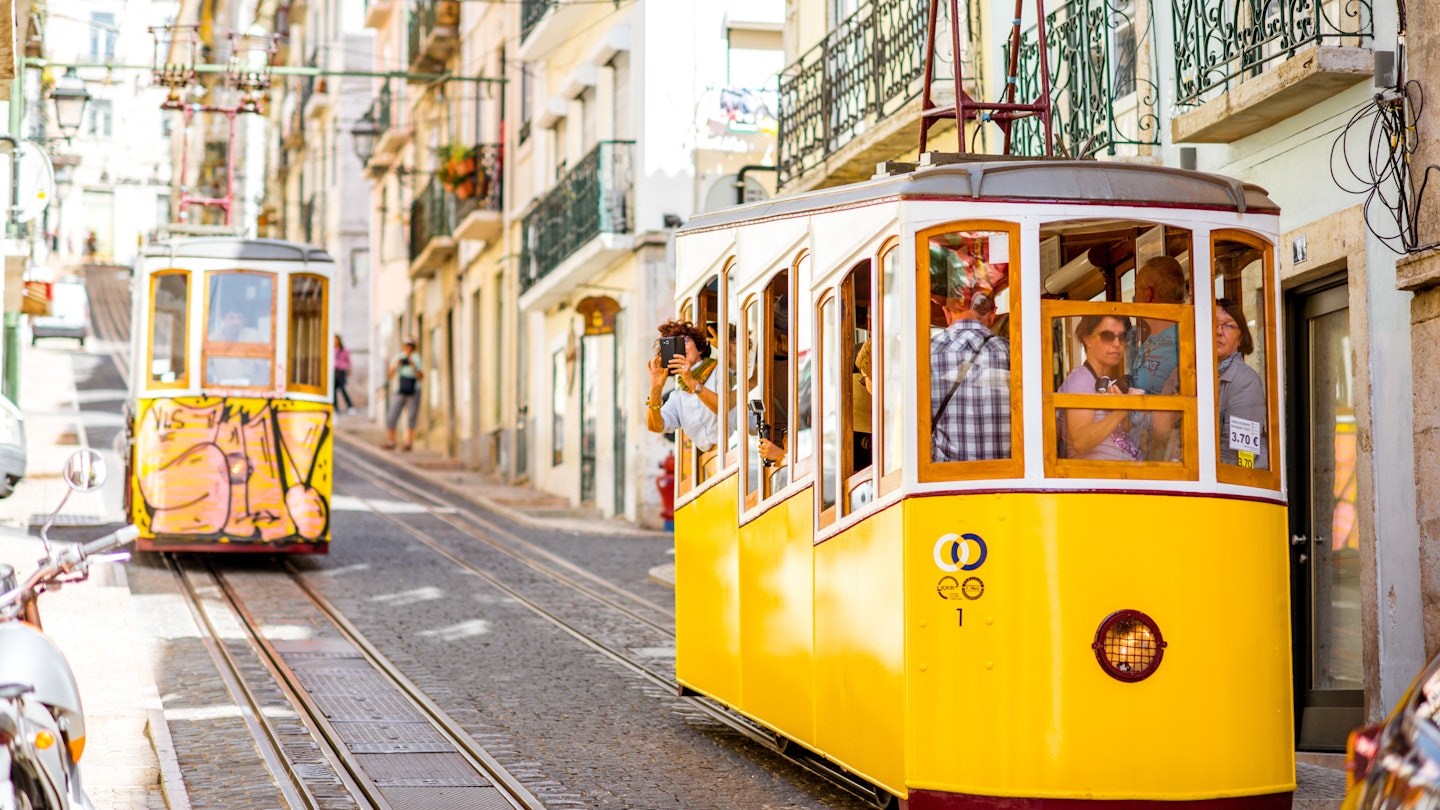Anchoring the southwest corner of Europe, Portugal is a relatively easy country to navigate. You’ll find a robust train network and buses to get you to places where the rails don’t reach. Speedy toll roads can carry you quickly between major cities; however, you can also take the slow, scenic (and free) back roads to reach your destination.
Best Ways to Get Around Portugal
What’s the best way to get around Portugal? All that depends largely on your travel plans. If you stick to the main cities, trains are recommended. If you’re heading to the beach, the Vamus Algarve bus network can help. For remote parks and nature reserves, you’ll likely need a car. Below, you’ll find a comprehensive rundown of the best ways to navigate Portugal, along with transport experiences you shouldn’t miss.
Enjoy the Scenic Journey Aboard the Train
Portugal has a decent railway network that connects major cities and towns across the country. Although trains don’t go everywhere, journeys on board are affordable, comfortable, and often the most scenic way to travel. Trains connect popular tourist hotspots, including Lisbon, Faro, Lagos, Porto, and Coimbra.
The country’s rail network is operated by CP (Comboios de Portugal) and offers four main types of long-distance service:
- Regional (R): Slow trains that stop almost everywhere.
- Interregional (IR): Faster services that skip smaller stations.
- Intercidade (IC): Express trains that stop only at bigger cities.
- Alfa Pendular Deluxe: Marginally faster than express trains and generally pricier.
Take the Bus to Visit More Towns
Buses are slower, yet often cheaper than trains, and are excellent for visiting smaller towns and villages not served by the rail network. Various small private bus operators operate a dense network of services across the country, among which Rede Expressos and Rodonorte are among the largest. In southern Portugal, the Vamus Algarve network reaches nearly every part of the Algarve.
Explore Portugal by Car or Motorbike
Renting a car allows you to roam freely without being bound to public transportation schedules. The contínually upgraded network of estradas (highways) is generally in good condition, although driving in small walled towns can be tricky, with some roads tapering to small sizes and one-way systems forcing detours.
Scooters can be rented in larger cities and the coastal Algarve, with prices starting around €40 per day. Motorbike rentals are also available, starting at €70 per day.
Pedal Through Stunning Landscapes by Bicycle
Cycling is popular in Portugal, with numerous possible itineraries in mountainous national parks, along the coast, or through the Alentejo plains. More challenging cycling routes can be found in the Serra da Estrela, which hosts the Volta a Portugal race.
Rattle Across Lisbon and Porto via Tram
Hopping aboard one of Portugal’s historic trams is a must-do experience. These vintage relics rumble through the narrow streets, providing a charming and economical sightseeing tour. Trams can get crowded by mid-day, so it’s advisable to opt for an early morning journey to secure your seat.
Accessible Transportation in Portugal
Unfortunately, transportation in Portugal may not fully accommodate travelers with disabilities. Some train stations have ramps while others do not, and some trains include interior steps that can make access difficult. However, Porto offers the best accessibility, with nearly all metro stations providing ramps and elevators, and dedicated spaces for wheelchair users. Lisbon has fewer elevators, and they tend to be out of service more frequently.




